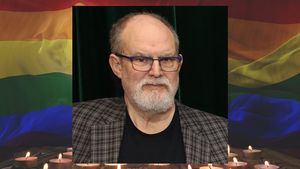A study out of the University of Sydney found that people's reported sexual orientation may change after being exposed to different theories about sexual orientation.
The article, which was published in the peer-reviewed journal Nature'sScientific Reports, explained that a significant number of heterosexual people report being less exclusive in their sexual orientation and report being more willing to have same-sex experiences after reading one of two 1-page informational articles, according to a press release from earlier this year.
"Did we change people's sexual orientation via our interventions? Surely not. I think our study may have changed how people interpreted their underlying sexual feelings," said the University of Sydney's James Morandini, the study's lead author. "This means two people with identical sexual orientations could describe their sexual orientation quite differently, depending on whether they have been exposed to fluid or continuous ways of understanding sexuality."
Of the two informational articles provided to research participants, one suggested that people fall on a spectrum of sexuality -- ranging from people exclusively attracted to men and other people exclusively attracted to women. The other showed research that suggests sexual orientation can change throughout someone's life -- it may be fluid.
The participants of the study self-reported as "straight" at the start of the study, according to the release. After participants read the first article, they were 28 percent more likely to identify as "non-exclusively heterosexual," and 19 percent indicated they would be more likely "to be willing to engage in same-sex sexual activities." Researchers found that those identifying with "non-exclusive heterosexuality" more than quadrupled after reading the article.
According to the researchers, those reading the article about sexual orientation being more fluid over time also reported similar effects, but to a lesser degree.
"This is not that surprising given that 'non-exclusive heterosexuals' (as opposed to bisexual, gay or lesbian individuals), although being the biggest same-sex attracted group, are not well captured in our society's representations and even vernacular," said senior author Illan Dar-Nimrod of the University of Sydney.
Dar-Nimrod added: "Given the social value that our society attach to these labels, however, such a shift may have far-reaching implications. It also suggests that certain level of same-sex sexual attraction may be much more common than previously estimated."



















































































